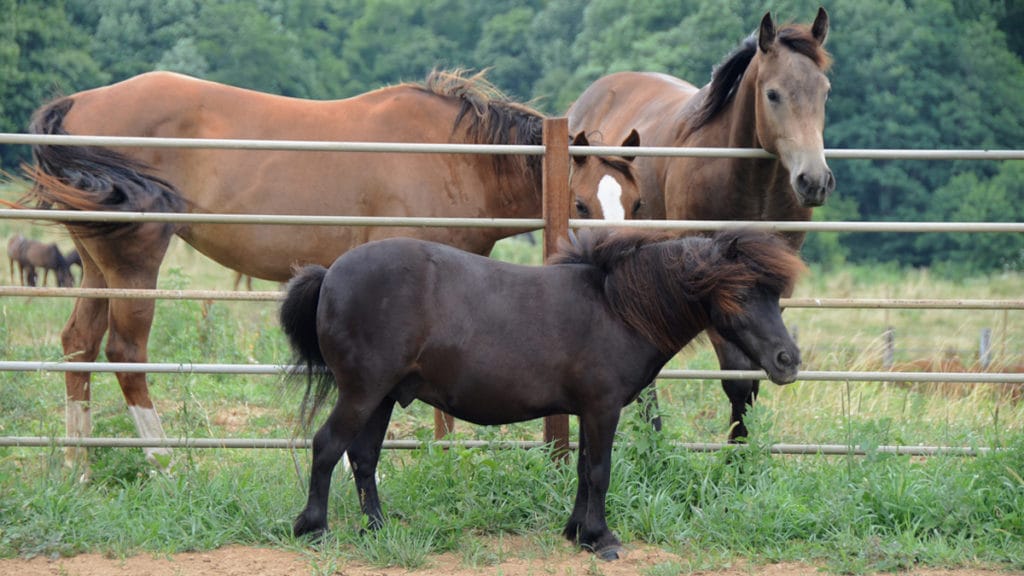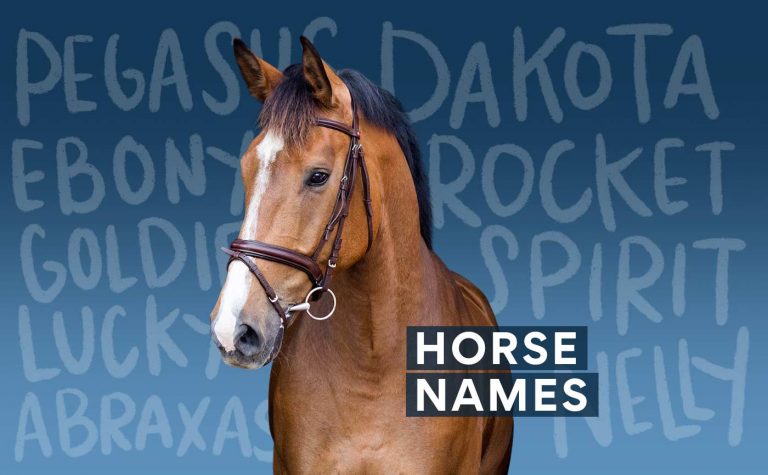Just like with dogs, horse breeds range in size, color, type and build. Some horse breeds are characterized by the horse’s color, such as the spotted Appaloosa horse, while others may be known by the job that they are most often used in, such as a Clydesdale workhorse. Some horse breeds even share different movements and intermediate gaits. While different horse breeds have different advantages and unique tendencies, the wide variety means there’s a perfect steed for everyone.
Marked by his large hindquarters and calm demeanor, the American Quarter Horse can be a great partner for any discipline. Quarter Horses are the “most popular breed of horse in the US today,” says Dr. Douglas Thal, DVM, owner of Thal Equine and Diplomate of the American Board of Veterinary Practitioners. “One of the reasons Quarter Horses are so popular is because they are versatile; they excel in the ‘stockier’ sports, like cattle penning and roping; barrel racing; pole bending or reining, because they were originally bred for short-distance racing,” Dr. Thal says. “They also make great hunter show mounts and trail partners.” Some horse breed registries even have breed-specific competitions, like the American Quarter Horse Congress.
For someone with more of a need for speed, Thoroughbreds are most commonly known for their use in horse racing. Due to their speedy metabolisms, high levels of energy and compact muscle build, Thoroughbreds are extremely athletic. Similarly versatile to the Quarter Horse, many Thoroughbreds that come from a racing background retire early and are retrained for a new discipline. “They often make appearances on dressage and jumping courses after their racing careers have ended,” notes Dr. Thal.
Though not all horse colors and coats have their own organizations, some horse colors have developed into horse breeds with independent registries that track and record lineage. Horses that are registered with a color breed, such as an American Paint Horse or Appaloosa Horse, have unique markings or coat colors and are out of one, or both, registered parents. While a Pinto Horse may have similar markings to a Paint, he cannot be registered unless his dam and/or sire were also Paints. More common horse colors, such as bay horses, chestnuts, roans or duns do not form individual horse breeds, but can be seen across a wide variety.
Another all-around popular horse breed is the Arabian. “Doing everything from ranch work and reining, to hunter pleasure and endurance trail rides, [Arabians] are well known for their intelligence and personalities,” explains Dr. Thal. Similar to Thoroughbreds, Arabians are classified as hot-blooded due to their energy and occasional nervousness. Dr. Thal describes cold-blooded horses as being “of the Draft variety, specifically bred to be larger and more docile to work on farms and agriculture.” Hot- and cold-blooded horses are often crossbred for a calmer disposition with powerful athleticism, forming a warmblood, such as a Dutch Warmblood or Hanoverian.
If you think that a horse may be the next addition to your pack, but maybe horseback riding isn’t for you, the Miniature Horse may be your perfect match! Immediately identifiable by his small size and compact body, Miniature Horses make excellent therapy animals and companions. But don’t let his size fool you! Minis are packed with large personalities!
Whether you are looking for a Quarter Horse trail companion, a Thoroughbred jumper or a Miniature Horse therapeutic helper, the perfect horse breed is out there waiting for you.
Share:










